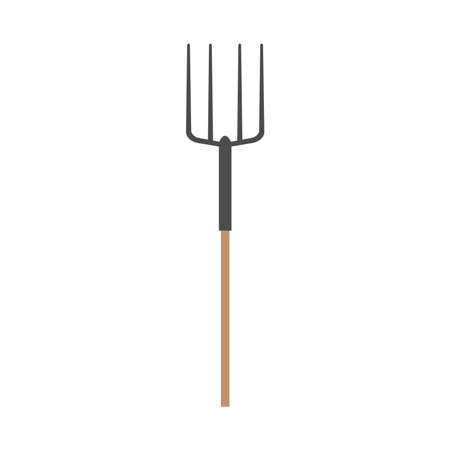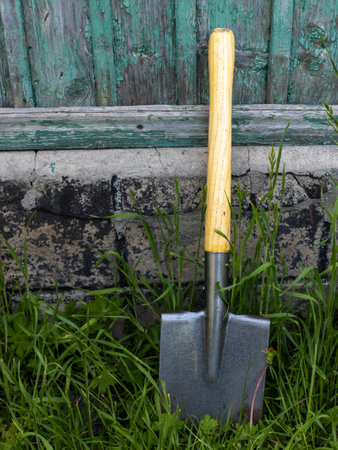Introduction to British Gardening Traditions
Gardening in the United Kingdom is much more than a hobby—it is a cherished part of the national identity, woven through generations like the winding paths of an English country garden. The UK’s unique gardening culture has blossomed under centuries of rain and drizzle, making wet weather not just a challenge but an essential ingredient in shaping how families nurture their plants and outdoor spaces. From grand historic estates to small urban plots, British gardens are famed for their lush greenery, thriving borders, and vibrant blooms that flourish despite (or perhaps because of) frequent showers. This distinct environment has given rise to traditional gardening practices and specialised tools designed to work harmoniously with the ever-present dampness. In this article, we’ll journey into these time-honoured traditions and discover how classic British gardening tools are perfectly suited for tending the earth when the skies are grey—a true lesson in embracing nature’s rhythm as we grow together.
2. The Essential Toolkit for Rainy Garden Days
When the British weather turns drizzly, the garden doesn’t have to be off-limits. Instead, it’s a wonderful chance for families to bond and learn together, drawing inspiration from traditional British gardening tools that have stood the test of time. Let’s take a peek at some classic items found in many a shed across the UK, each designed to keep little hands and grown-up green thumbs busy come rain or shine.
Traditional Tools That Weather Every Storm
British gardeners have long relied on sturdy, well-designed tools to make soggy days enjoyable and productive. Here are some favourites:
| Tool | Description | Why It’s Perfect for Wet Weather |
|---|---|---|
| Wellies (Wellington Boots) | Waterproof boots made from rubber, often colourful and fun for children. | Keep feet dry and warm, perfect for stomping through puddles and muddy beds. |
| Trug | A shallow wooden basket, traditionally made from willow or sweet chestnut. | Makes collecting soggy leaves, veggies or flowers easy—even with little helpers. |
| Sturdy Spade | A robust digging tool with a solid wooden handle and metal blade. | Ideal for heavy, wet soil—won’t bend or break even in tough conditions. |
| Hand Fork | A small three-pronged fork for breaking up soil around plants. | Great for loosening clumps of earth after rain, easy for children to use under supervision. |
| Oilskin Jacket | A waterproof jacket, traditionally coated with oil to repel water. | Keeps gardeners dry while they work, allowing longer outdoor sessions in drizzle. |
The Family Connection: Passing Down Traditions
Using these trusty tools isn’t just about practicality; it’s about sharing stories and traditions from generation to generation. Imagine showing your child how to fill a trug with freshly picked runner beans or letting them dig alongside you with their own miniature spade. These simple activities build memories that last far longer than the rainclouds overhead.

3. Caring for Plants in the Wet: Lessons from Nature
British gardens, with their frequent drizzle and lush greenery, teach us valuable lessons about nurturing water-loving plants. Just as local willows and ferns thrive in damp woodland corners, British gardeners have learnt to embrace the rain by choosing plants that love a good soak. Observe how native species like marsh marigolds or primroses naturally flourish in soggy soil—these are your guides when planning wet-weather beds.
Tip 1: Choose Local Champions
Opt for traditional British favourites such as astilbes, hostas, and meadowsweet. These plants are well adapted to our moist climate and add vibrant colour to any garden patch after a downpour.
Tip 2: Planting with Purpose
Take inspiration from wild hedgerows: group water-thirsty plants together in naturally boggy spots, much like you’d find at the edge of a British stream. This not only makes the most of wet ground but also creates delightful pockets of biodiversity for curious young explorers.
Tip 3: Mulch for Moisture Management
Mulching with leaf mould or bark chips—a time-honoured British practice—helps maintain steady moisture levels and keeps those roots snug even during unpredictable showers. It’s a simple trick passed down through generations of gardeners who know how to work hand-in-hand with nature’s rhythms.
Let the wisdom of Britain’s landscapes inspire you and your little ones; every puddle is an opportunity for growth, both for your plants and for your family’s connection with nature.
4. Family Time in the Rain: Turning Chores into Play
Gardening in classic British drizzle might sound dreary, but with a little creativity and the right traditional tools, it can become a cherished family tradition. Encouraging children to don their wellies and join you outside transforms a rainy-day chore into an adventure brimming with laughter and learning. With sturdy wooden-handled spades, miniature watering cans, and classic trugs for collecting treasures, every raindrop becomes an invitation to explore nature’s resilience.
Making Memories With Traditional Tools
The magic lies in how you use these timeless implements together. Let your child dig alongside you with a scaled-down trowel or help carry freshly picked herbs in a woven willow basket. Not only do they learn the value of hard work and teamwork, but they also feel a sense of pride in using tools that have been passed down through generations.
Ideas for Rainy Day Garden Games
| Activity | Tool Involved | Learning Opportunity |
|---|---|---|
| Puddle Jumping Relay | Sturdy Wellies | Physical coordination and confidence outdoors |
| Treasure Hunt for Worms & Bugs | Mini Trowel, Magnifying Glass | Observation skills and curiosity about wildlife |
| Herb Gathering Competition | Willow Trug | Sensory exploration and plant identification |
Telling Stories Under the Shed Roof
When the rain pours harder, gather under the potting shed’s shelter and share stories about the garden’s history or invent tales inspired by the plants around you. The gentle drumming of rain on the roof sets the perfect scene for bonding and imagination. Through such moments, gardening becomes not just about maintaining plants but nurturing family ties and creating lifelong memories—even (and especially) when the weather is wet.
5. Passing Down Traditions: Stories from British Gardens
In every British garden, there is a tapestry woven from memories, gentle wisdom, and the careful passing down of cherished tools. From grandfathers sharing their battered copper watering cans with eager grandchildren, to mothers teaching the art of wielding a trusty border spade in drizzly weather, these stories form the heart of our gardening culture. Each season, families gather between rows of sodden soil and budding plants, exchanging tips on how best to use that well-oiled hoe or the perfectly balanced rake when the ground is heavy with rain. It’s here, amidst laughter and muddy boots, that generations connect—not just through words, but through the gentle guidance of hands-on learning. We see children’s eyes widen as they master the rhythm of sweeping rain off leaves with an old-fashioned besom broom or listen to tales of how their ancestors braved soggy summers using the same fork now resting in their grip. These moments remind us that gardening is more than tending to plants; it is nurturing roots within our families and communities. As we pass down these trusted tools—each one bearing a patina of history—we also share resilience and joy, ensuring that every new generation finds comfort and inspiration beneath Britain’s often-grey skies.
6. Conclusion: Embracing the Grey Skies Together
As we gather our wellies, wax jackets, and sturdy trugs, let’s remember that gardening in the British drizzle is so much more than a chore—it’s a cherished tradition that brings families together. While the grey skies might sometimes seem daunting, each puddle and raindrop offers a fresh perspective for both our gardens and our relationships. When we invite our children to help dig with a classic border spade or gently brush the rain off rose petals with a soft bristle brush, we’re not only caring for our plants but also nurturing patience, curiosity, and resilience within ourselves and our little ones.
Wet weather gardening is a living lesson in embracing change and making the most of what nature gives us. With every muddy adventure—be it searching for earthworms or watching seeds sprout in soggy soil—we cultivate gratitude for small miracles and shared laughter. These simple moments, inspired by traditional British tools and age-old wisdom, weave precious memories beneath the clouds.
So next time you see the sky turning grey, take it as an invitation rather than a setback. Arm in arm with your children, step outside and celebrate the beauty found in Britain’s wet weather. With every family gardening session, roots grow deeper—not just in the earth, but in our hearts as well.


